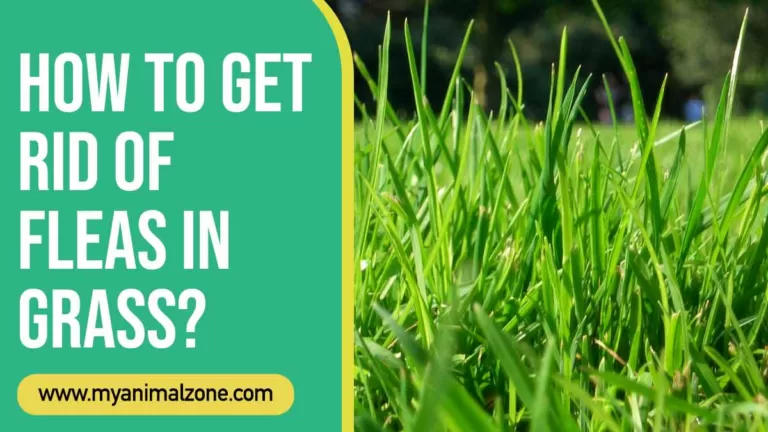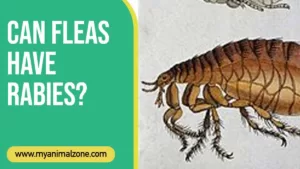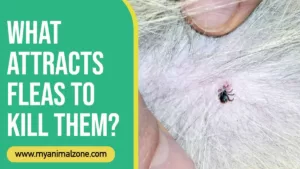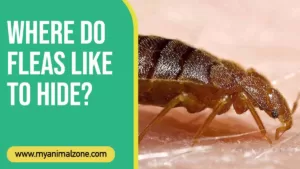Fleas are a common problem in lawns and gardens, particularly during warm summer months, but how do you eliminate the fleas in the grass is the question. Fortunately, you can take steps to make your lawn more inhospitable to fleas, along with the use of chemical pesticides.
They breed fast and look for new places to lay their eggs. Outdoor areas like grassy fields and yards with overgrown vegetation are common spots for infestations. The grass is perfect for them because it’s warm, humid, and dense.
To get rid of fleas in the grass, you must understand why they’re there. Female fleas lay eggs on their host, like a pet. They can also end up in your yard if a pet spends time outside. Flea eggs survive in warm and wet conditions until they hatch. To prevent adult fleas from laying eggs,
- keep the lawn free of moist leaf litter and debris
- Rodents nearby can also bring fleas.
Identifying Fleas in Grass
Identifying fleas in your lawn and garden can be challenging. But there are clues to help:
- Look for small, dark insect droppings on the blades of grass.
- You may also see tiny dirt specks from flea burrows in the soil.
- Check the fur and skin of animals who visit your yard. Live fleas may be there too. They are usually dark brownish-red or reddish-black with long legs and 2 to 3mm (1/8 inch) long.
Natural Remedies for Fleas in Grass
Natural remedies are an effective way to eliminate fleas in the grass. Fleas are tough pests that need a specific approach for control. Luckily, there are safe, natural methods that don’t involve harsh or dangerous chemicals.
- Neem oil is a pesticide found in neem tree seeds. It has antifeedant and insect-repellent qualities that can help kill and repel fleas. Please don’t use a highly concentrated solution, as it may harm your grass, plants, and trees. Dilute it and apply it directly to the affected areas every two weeks until the fleas are gone.
- Vinegar is also an excellent natural remedy for flea infestations. It’s acidic, which makes it an unpleasant home for the bugs. Mix equal parts of water and white distilled vinegar in a spray bottle before applying it to the infested area to change the soil’s pH level, preventing future infestations.
- Diatomaceous earth is another popular natural remedy for removing fleas. It contains silicon dioxide, an abrasive compound that kills insects. Sprinkle it lightly over affected areas for about two weeks, and it should eradicate the fleas.
Chemical Treatments for Fleas in Grass
Chemical treatments are the fastest, most reliable way to kill fleas in the grass. They come in liquid, spray, or granule form. Use them in late summer when insect activity is high. Look for products with adulticides and larvicides. Common active ingredients are permethrin, pyrethrins, and bifenthrin.
Follow directions according to lawn size. Don’t over or under-apply. Water heavily before applying the product so the hidden fleas appear and the insecticide can work better. Wait to mow right after application, as this can reduce effectiveness.
Preventing Fleas in Grass
Preventing fleas is essential. Treat your pet with flea control and follow these steps:
- Mow lawns regularly to get rid of hiding places and let predators in.
- Grow non-woody plants in gardens and grassy areas to create shade, keep moisture down, and give food to animals that eat fleas.
- Do yard maintenance, such as removing leaves and dead grass and setting traps for pests.
- Use yard treatments to break the life cycle of adults, larvae, and eggs.
- In places where fleas are common, use preventative therapies often.
Professional Flea Control Services
Flea infestations can be challenging to manage with help. Professional pest control services are a great way to get rid of fleas. In addition, licensed professionals know how to spot and remove fleas from your home’s outdoor areas.
A flea exterminator can create a plan just for you, which includes insecticides, larvicides, or insect growth regulators. The technician may use multiple methods depending on how bad the infestation is.
Look for a pest management company with experience dealing with various insects. This type of service includes preventive measures and treatments for existing issues. Many companies provide warranties if the infestation still needs to be eliminated.
For success, be methodical when treating your lawn with flea insecticide. Read the instructions on the label carefully. Keep the grass short and maintain it regularly. Avoid organic debris buildup, creating unfriendly living conditions for fleas.
In addition to flea control products, use natural products and techniques like neem oil, diatomaceous earth, and essential oils. These can help treat and repel adult fleas and welcome beneficial wildlife like ground beetles, fire ants, and spiders. These will keep flea numbers down. Eventually, your lawn will become a paradise instead of a flea tormented!
Conclusion
You will need to use a flea control product to get the fleas out of your garden. Many products are available on the market that can help eliminate your flea infestation problem. Be sure to read the labels carefully and follow all instructions when using any chemical or natural pest control product. If treating specific areas, such as furniture or carpets, vacuum the area first to remove any flea eggs. After treating the affected areas, you must continue monitoring for additional signs of infestation and reapply for treatments as needed. You may also consider using natural methods such as diatomaceous earth in your garden and other outdoor areas where fleas may be present.
Related topics




